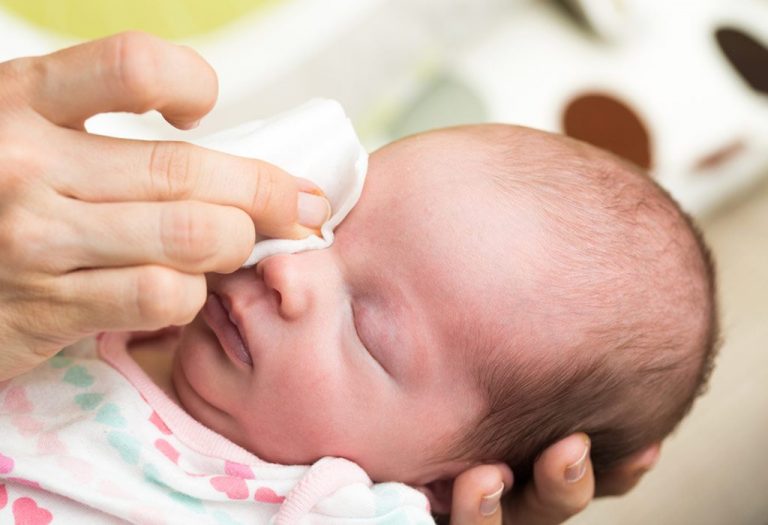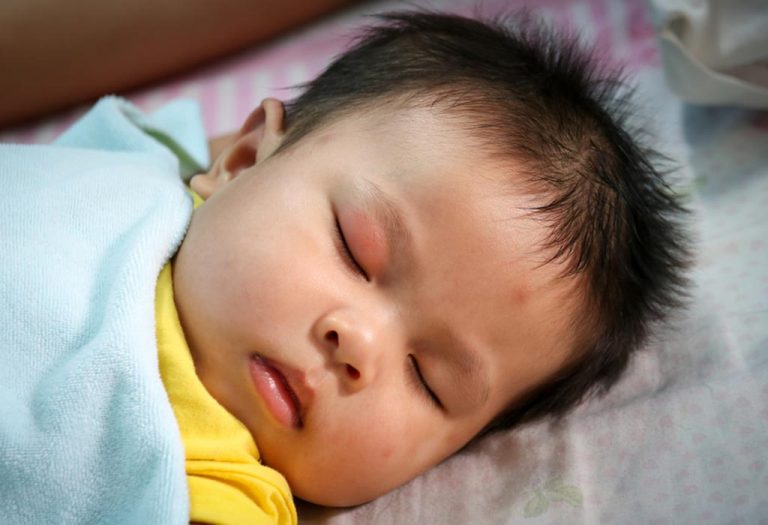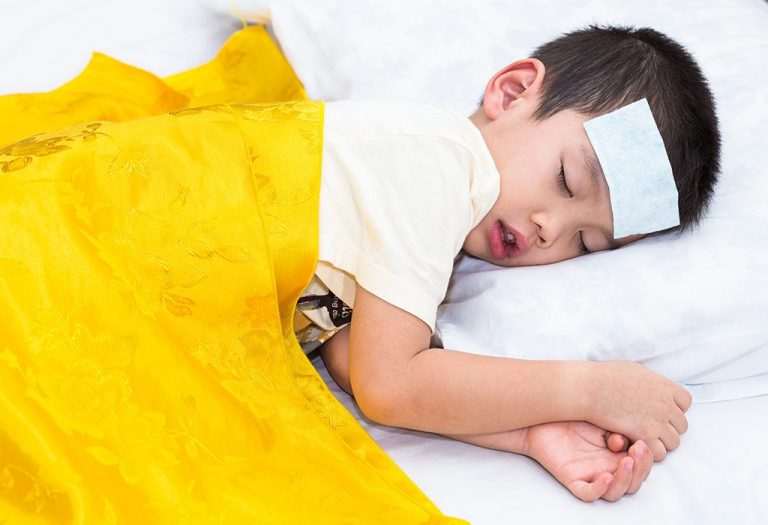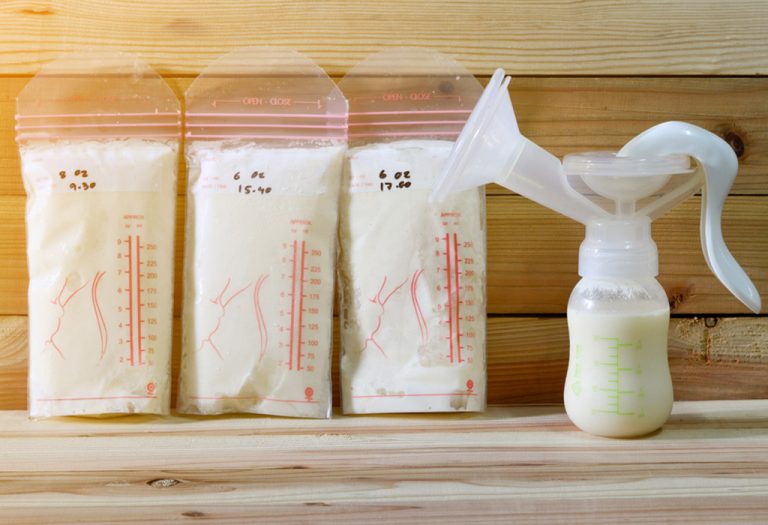Sticky Eyes in Newborn Babies – Causes, Signs and Treatment

- Is Sticky Eyes in Babies Common?
- Causes of Sticky Eyes in Infants
- Signs of Sticky Eyes in Babies
- Are Sticky Eyes in Infants Harmful?
- How Can You Tell That Your Baby Has an Eye Infection?
- Is the Yellow Substance Around Baby’s Eyes a Sign of an Eye Infection?
- Treatment for Infant Sticky Eye
- Home Remedies for Sticky Eyes in Infants
- Tips to Prevent an Eye Infection in Babies
- When Should You Call the Doctor?
- FAQs
When you have your baby in your arms, your panic button remains alert. And when the baby is in the newborn phase, the magnitude of this anxiety increases. Even a tiny aberration may become a reason for concern. However, you need not panic when you see a squish of yellowish fluid forming near your newborn’s eyes. Sticky eyes in newborn babies, also known as neonatal conjunctivitis, is a common condition characterised by discharge in one or both eyes. A newborn’s sticky eye can concern new parents, but it is usually treatable with proper care and attention. Read on to find out what it is and the steps you can take to treat it.
Is Sticky Eyes in Babies Common?
Yes, sticky eyes in babies are quite common. Many newborns experience this condition due to a blocked tear duct, where the duct that drains tears from the eye into the nose is not fully open or developed. This can lead to an accumulation of tears and discharge (1). In some cases, sticky eyes may result from mild infections or irritations. While it can concern parents, sticky eyes are usually manageable and treatable with simple home care or medical intervention.
Causes of Sticky Eyes in Infants
Sticky eyes in infants can arise from a variety of causes. Here, we explore some of the most common causes of sticky eyes in newborns.
1. Nasolacrimal Duct Obstruction
A blocked tear duct is one of the infants’ most common causes of sticky eyes. This occurs when the duct that drains tears from the eye to the nose is not fully developed or is obstructed, leading to tear accumulation and discharge.
2. Neonatal Conjunctivitis
Neonatal conjunctivitis or ophthalmia neonatorum, is an inflammation of the conjunctiva in newborns. It can be caused by infections acquired during delivery, such as those from bacteria (e.g., Chlamydia trachomatis, Neisseria gonorrhoeae) or viruses (e.g., herpes simplex virus) (4).
3. Bacterial Infections
Bacterial infections, such as those caused by Staphylococcus aureus or Streptococcus pneumoniae, can lead to sticky eyes in infants. These infections often result in purulent discharge and require prompt medical treatment to prevent complications.
4. Upper Respiratory Tract Infections
Upper respiratory tract infections (URTIs), such as the common cold, can sometimes lead to sticky eyes in infants. The infection can cause inflammation and increased mucus production, spreading to the eyes and resulting in discharge.
5. Stye or Hordeolum
A stye (or hordeolum) is an infection of the eyelid glands, typically caused by Staphylococcus bacteria. It appears as a red, swollen lump on the eyelid and can cause sticky discharge. Proper hygiene and warm compresses are usually effective treatments (3).
6. Dacryocystitis
Dacryocystitis is an infection of the tear sac (lacrimal sac), often resulting from a blocked tear duct. This condition causes redness, swelling, and discharge from the eye. It can be serious and requires prompt medical attention to prevent complications (2).
7. Allergies
Though less common in newborns, allergies can result from exposure to allergens such as pollen, dust, or pet dander. Symptoms include redness, itching, and watery discharge (5).
Signs of Sticky Eyes in Babies
Some of the tell-tale signs of sticky eyes include:
- A yellow or white fluid characterises it at the corner of the eyes.
- The discharge may appear flaky or crusty, especially after sleep.
- There may also be mild redness and inflammation around or below the eyes.
- The baby’s eyes may become watery, resulting from heavy tearing of the tear ducts.
- The colour of the discharge can also turn green.
Are Sticky Eyes in Infants Harmful?
Sticky eyes typically clear after a few days with regular cleaning and do not require further thought. However, in some cases, if they do not cure naturally or the condition aggravates, it may be a sign of an underlying issue, and you may need to seek a doctor’s evaluation.
How Can You Tell That Your Baby Has an Eye Infection?
While an eye infection can often be confused with a rash or a bruise, some of the signs include:
- Excessive rubbing of eyes and discomfort.
- Soreness develops around the eyes, or the eyes turn red.
- The discharge gets more frequent and more severe.
Is the Yellow Substance Around Baby’s Eyes a Sign of an Eye Infection?
The yellowish discharge is due to the blocked tear ducts, and as the ducts open, the discharge stops. However, it may also be a sign of infection and conjunctivitis in some cases.
Treatment for Infant Sticky Eye
Effective treatment for sticky eyes in newborns depends on the underlying cause and can range from simple home remedies to medical interventions. Here are some common treatments to consider:
1. Antibiotic Eye Drops or Ointments
A paediatrician may prescribe antibiotic eye drops or ointments for bacterial infections. These medications help eliminate the bacteria causing the disease and reduce symptoms such as discharge and redness (8).
2. Massage
Massaging the area around the tear duct can help open a blocked duct. Using clean fingers, apply light pressure to the inner corner of the baby’s eye and move downward towards the nose (6).
3. Tear Duct Probing
If a blocked tear duct persists and does not resolve with massage or other noninvasive methods, a doctor may perform tear duct probing. This procedure involves inserting a thin, sterile probe into the tear duct to open the blockage (7).
4. Medications for Cough and Cold
Upper respiratory tract infections, which can contribute to sticky eyes, may be treated with medications for cough and cold. While infants typically cannot take over-the-counter cold medications, paediatricians may recommend saline nasal drops, a cool-mist humidifier, or other treatments to alleviate symptoms and reduce eye discharge.
Home Remedies for Sticky Eyes in Infants
Home remedies for sticky eyes in infants can provide gentle and effective relief for mild cases. Here are some of the most commonly recommended home remedies for managing sticky eyes in newborns.
1. Sterilised Water
This is the most commonly practised method to clean the eyes.
- Step 1: Wash your hands thoroughly. Keep the sterilised water (water that has been boiled and cooled) and sterilised cotton balls handy.
- Step 2: Gently wipe the gluey substance with sterilised cotton. Start by gently dabbing the cotton ball in the inner corner of the eyes, gradually moving towards the outer corner.
- Step 3: Tilt the baby’s head towards the eye being cleaned. This will ensure that the water does not trickle down or to the side and prevent cross-contamination.
- Step 4: Repeat the process until the eyes are cleaned, using a new cotton bud each time.
2. Saline Solution
The steps mentioned above can be done using a saline solution as well. It minimises the build-up of bacterial infection.
3. Cold Compress
It provides moisture to the eyes and makes it easier to dissolve the flakiness caused by the discharge, and the baby can open their eyes when they wake up.
4. Antibiotic Solution
A paediatrician can suggest eye drops or an antibiotic solution for cleaning the discharge. Please follow their instructions and dosage carefully.
5. Massaging
Gently massaging the areas near the eyes and nose may help open the blocked ducts and reduce the chances of sticky fluid building up. It’s better to consult an ophthalmologist who can practically demonstrate the massage technique to you (9).
6. External Instrument
The sticky discharge forms because the baby’s tear ducts are blocked. If the ducts do not open naturally within a year or so, your doctor may suggest opening them. The most common approach is surgical probing, where the doctor inserts a medical instrument into the tear duct to remove the obstruction. Remember, this procedure can be performed only by an expert and should not be tried at home.
Tips on how to clean the eyelids and eyes of your baby-
- Before cleaning the baby’s eyes and eyelids, it is essential to wash your hands with water and neutral soap to avoid infecting the baby’s eyes.
- The cleaning should be done with a sterilised wet wipe or gauze to soften the scabs and facilitate the extraction of secretions. Never rub or scratch if they do not disappear, as it could damage the baby’s eye.
- The eye should always be cleaned from the tear duct to the corner of the eye so that the debris is dragged out.
Tips to Prevent an Eye Infection in Babies
Here are some tips you can follow to protect your baby from an eye infection:
- Make sure to clean your baby’s hands regularly, as babies tend to rub their eyes, and dirty hands can lead to an eye infection.
- If a family member or someone around the baby has an eye infection, keep him away from them.
- Use eye drops or antibiotics only if a paediatrician recommends them.
- Ensure that the baby’s surroundings are hygienic and that their bedding, towels, and clothes are washed regularly.
When Should You Call the Doctor?
Newborn sticky eyes are a result of blocked tear ducts. In most cases, it is not severe and can be treated at home. However, if your baby has sticky eyes for a long time, you should consult a doctor. Make sure to check the symptoms to avoid eye infections.
FAQs
1. Can sticky eyes in newborns lead to complications if left untreated?
Parents should understand the potential complications of untreated sticky eyes in newborns. While many cases resolve on their own or with simple treatments, complications such as persistent infections, corneal ulcers, or damage to the tear ducts can occur if left untreated. Prompt medical attention is crucial to prevent such complications.
2. How long does sticky eye last in newborns?
In mild cases, sticky eyes resolve on their own within a few days to a week with proper hygiene and care. However, more severe cases or those caused by infections may require medical treatment and can take longer to resolve.
3. Can sticky eyes in newborns be a sign of an underlying health condition?
While sticky eyes are often benign and temporary, they can sometimes be a symptom of an underlying issue, such as a blocked tear duct or infection.
Sticky eyes aren’t a problem in themselves. In fact, they are a natural process, and in most cases, they get better with home remedies. But it is always good to be aware and keep an eye on your baby so that it does not lead to an infection.
References/Resources:
1. Vagge. A, Ferro Desideri. L, Nucci. P, et al.; Congenital Nasolacrimal Duct Obstruction (CNLDO): A Review; PubMed Central; https://www.ncbi.nlm.nih.gov/pmc/articles/PMC6313586/
2. Prakash. R; A Bacteriological Study of Dacryocystitis; Journal of Clinical and Diagnostic Research; https://www.researchgate.net/publication/270450643_A_Bacteriological_Study_of_Dacryocystitis
3. Styes in Children; University of Rochester Medical Center; https://www.urmc.rochester.edu/encyclopedia/content.aspx?contenttypeid=90&contentid=P02102
4. Chawla. R, Kellner. J. D, Astle. W. F; Acute infectious conjunctivitis in childhood; PubMed Central; https://www.ncbi.nlm.nih.gov/pmc/articles/PMC2804756/
5. Chad. Z; Allergies in children; PubMed Central; https://www.ncbi.nlm.nih.gov/pmc/articles/PMC2805592/
6. Boyd. K; Blocked Tear Duct Treatment; American Academy of Ophthalmology; https://www.aao.org/eye-health/diseases/treatment-blocked-tear-duct
7. Kothari. M, Rathod. V, Shah. K, et al.; Congenital nasolacrimal duct obstruction: Should we continue lacrimal massage till 1 year or perform an office probing at 6 months?; PubMed Central; https://www.ncbi.nlm.nih.gov/pmc/articles/PMC5381299/
8. Conjunctivitis in Children; Stanford Medicine Children’s Health; https://www.stanfordchildrens.org/en/topic/default?id=conjunctivitis-in-children-90-P02078
9. Children with sticky and watery eyes due to failure of tear drainage; Cambridge University Hospitals; https://www.cuh.nhs.uk/patient-information/children-with-sticky-and-watery-eyes-due-to-failure-of-tear-drainage/
Also Read:
Dark Circles Under Baby’s Eyes
Watery Eyes (Epiphora) in Babies
Baby Eyes Rolling Back – Is It Normal?
Home Remedies for Baby Eye Infection
Baby Eye Color: When Does it Change and More
Was This Article Helpful?
Parenting is a huge responsibility, for you as a caregiver, but also for us as a parenting content platform. We understand that and take our responsibility of creating credible content seriously. FirstCry Parenting articles are written and published only after extensive research using factually sound references to deliver quality content that is accurate, validated by experts, and completely reliable. To understand how we go about creating content that is credible, read our editorial policy here.
























